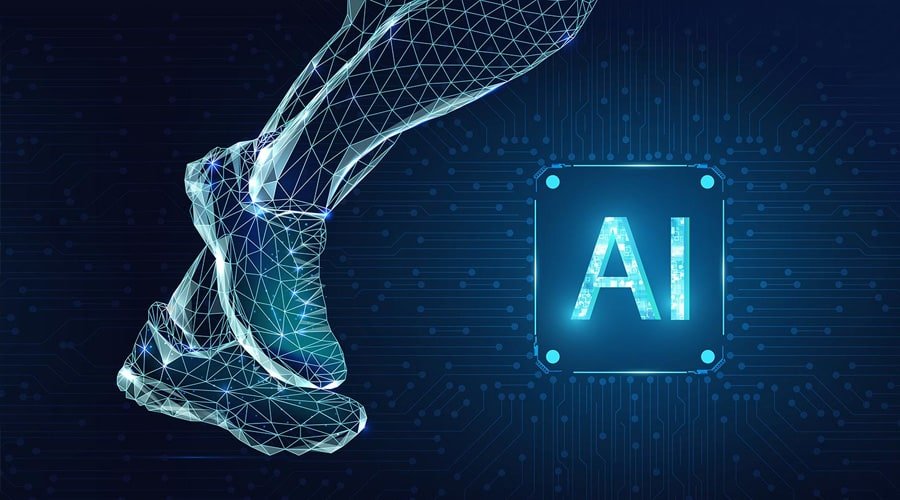
Artificial intelligence in the Olympics is changing how tech is used in sports and other relative areas.
‘The show must go on,’ an often heard sentence that makes absolute sense in the pandemic hit the world. Yes, it all became at the end of 2019 when Covid-19 was first reported in Wuhan. Later, the virus spread across the globe and pushed governments to impose strict lockdowns. An international sports event that was supposed to take place in 2020 got delayed and finally, when people started living with the virus in 2021, the IOC and Japan, the host country, came forward to go on with it. One of the most welcomed guests in the summer Tokyo Olympics is artificial intelligence. Artificial intelligence in the Olympics is changing the face of how tech is used in sports and other relative areas.
The sports industry implies calculative features that make it ideal for the applications of artificial intelligence. For many years now, AI in sports is widely lauded as a tool to improve athlete’s performance and calculate their moves. Olympics games have been an early adopter of technology ever since stopwatches and time trackers came into existence. Omega’s Magic Eye camera, which debuted in 1948, gave us the first of many ‘photo finishes’ for track events. Later, technology evolved to be a part of every sporting event that happened across the globe. Taking a big leap in artificial intelligence and machine learning, the Summer Tokyo Olympics is giving athletes and moderators a world-class experience on AI in sports.
Technology at the Forefront of Tokyo Olympics
Before jumping into how artificial intelligence in the Olympics is powering athletes and help conduct games with more perfections, let’s have a look at how technology is carrying out simple tasks in the Olympics village. A major fact about the Olympics is that hundreds of people from across the globe gather at a designated place. They are provided with accommodations properly. But a major challenge that event managers face is to take the athletes and their teams to the event avenue from their accommodations. Fortunately, autonomous vehicles come as a handy solution to tackle mobility issues. Autonomous vehicles are designated to chauffeur athletes around the Olympics village. Besides, machine learning-powered self-driving cars are programmed to bring back athletic equipment such as javelins, discuses, and hammers to athletes during the games.
As mentioned earlier, the Olympics is a place where different countries collide. Along with them comes the language issue. Not everybody is familiar with other counties’ languages. Therefore, the Olympics is using AI-backed real-time translation systems to make different people understand instructions. The translator is installed on smartphones or other compatible devices, enabling users to select the target language, speak into the device, and subsequently deliver the spoken words in the targeted language. Besides, artificial intelligence in the Olympics is being used in different forms like tracking tools, cloud-based broadcasting, robotic assistants, and 5G.
Big Data to Track Down Athletes’ Health and Performance
Big data plays a drastic role in improving athletes’ performance. Especially, when it comes to surfing, big data is aiding the athletes by tracking down their performance and putting it in numbers. As a result, the USA Surfing organization has employed plenty of big data techniques to help its athletes gain an edge. Besides, big data is also being used to monitor the physiological state of athletes including cardiovascular output, sleep patterns, heart-rate variability, etc. On the other hand, machine learning devised a big role in selecting the perfect site for surfing games.
3DAT to Find the Potential of Elite Athletes
Intel and Alibaba have jointly made 3DAT (3D Athlete Tracking) to closely monitor athletes’ moves. First debuted at the US Olympic Trials in Eugene Oregon, 3DAT is being used in the Tokyo Olympics for many purposes. The AI-base system takes images from five special trackside cameras, sends it to Alibaba cloud where it is converted to actionable insights. The method is seen as a disruptive way to find the potential of elite athletes.
Robots to Help Basketball Players in Free Throw
Although Toyota’s AI-powered humanoid basketball player is not one among the team members in the basketball games, the robot is a legend of its own kind. The humanoid robot has made history in 2019 when it netted the Guinness World Record for ‘most consecutive basketball free throws by a humanoid robot.’ Now, the robot is being used in the Olympics to show its throwing skills before every commercial break.
Share This Article
Do the sharing thingy

You must be logged in to post a comment.